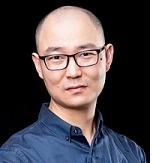Keynote Speakers

Asst. Prof. Zheng Zhao
The Chinese University of Hong Kong, China
Short Bio: Dr. Zhao received his Ph.D. from the Shanghai Institute of Organic Chemistry, Chinese Academy of Sciences in 2014. In 2015, he joined the research group led by Academician Benzhong Tang at the Hong Kong University of Science and Technology (HKUST) as a postdoctoral researcher, and has served as an independent researcher at the Chinese University of Hong Kong, Shenzhen (CUHK-Shenzhen) since 2021. Specializing in materials science, Dr. Zhao's research focuses on the mechanistic elucidation and functional development of organic semiconductor materials, bioluminescent probes, and organic/inorganic aggregate materials. His work uniquely integrates fundamental scientific inquiry with technological innovation, driving progress across interdisciplinary domains such as optoelectronics and biomedicine. An eminent contributor to his field, Dr. Zhao has authored over 130 peer-reviewed articles in premier journals, including Nature Photonics, Journal of the American Chemical Society, Nature Communications, Matter, Angewandte Chemie, and Advanced Materials. Of these, 13 papers are classified as "ESI Highly Cited Papers" and 2 as "ESI Hot Papers," highlighting their global influence. His body of work has amassed over 11,000 citations, with one landmark paper cited more than 1,000 times, and he holds an H-index of 60, reflecting his consistent impact on scientific research.
Speech Title: Aggregation-Induced Emission Probes and Devices
Speech Abstract: Molecular imaging technology based on organic optoelectronic functional materials can provide critical information for disease diagnosis, treatment, understanding disease mechanisms, and evaluating drug efficacy. However, in the complex aqueous environment of living organisms, organic optoelectronic molecules tend to spontaneously aggregate, forming assemblies with conformations and microenvironments distinct from their single-molecule forms. This aggregation often leads to changes in their properties, limiting their applications in revealing pathological mechanisms and enabling disease diagnosis and treatment at the cellular and in vivo levels. In this presentation, we will focus on the mechanisms underlying the structural and property differences of biomedical optoelectronic molecules before and after aggregation, as well as their applications in precise diagnosis, treatment, and efficacy evaluation of major diseases. By elucidating the relationship between material properties at the microscopic and aggregate levels, and integrating stimulus-responsive design principles tailored to the complex physiological microenvironments at the cellular and in vivo levels, we have achieved controllable aggregation and activation of biomedical optoelectronic molecules at disease sites. This has enabled the construction of diagnostic, tracing, and therapeutic devices with excellent targeting capabilities, high biosafety, and significant therapeutic efficacy. Furthermore, we have advanced their applications in elucidating cellular physiological processes, disease diagnosis, and treatment.